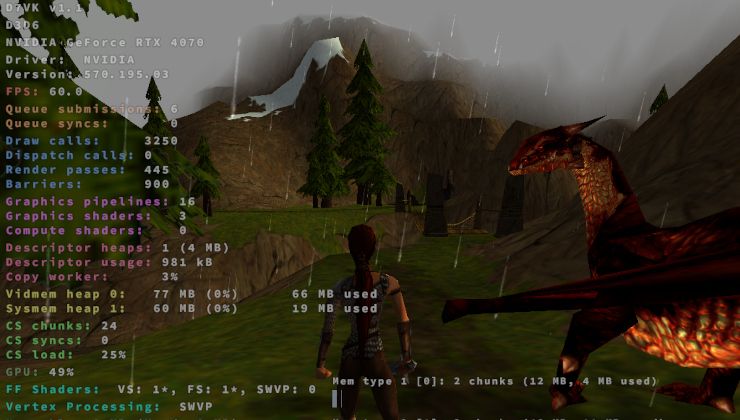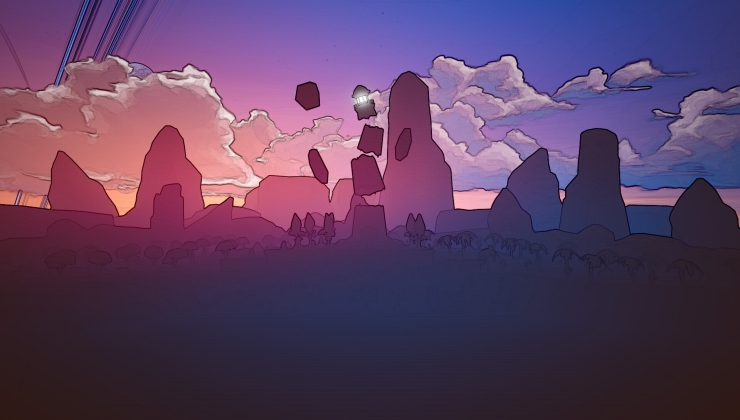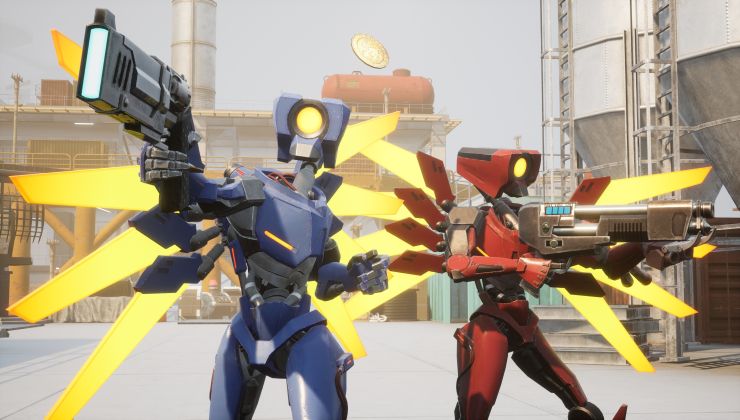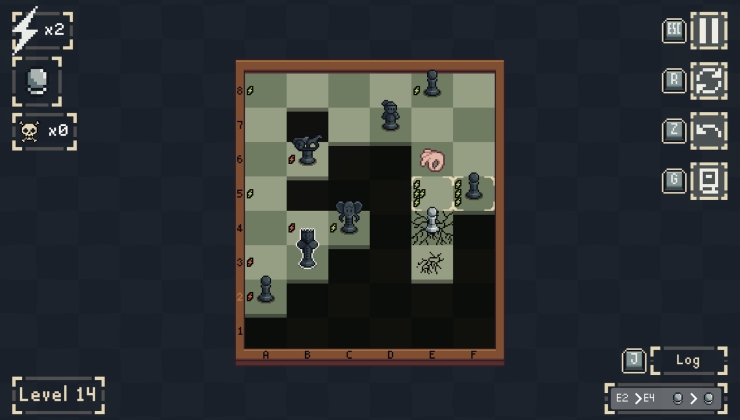I did it, I jumped ship from Ubuntu to Antergos and I honestly can’t see myself going back. Here’s some thoughts on that.
Why I switched
There’s many reasons for my switch, but the main one has been stability. Ubuntu has been getting more problem-filled with every new release for me so I had enough. Not only that, but due to it being dependent on GNOME packages, stuff was being stripped away too and it’s just a mess now. Some applications have normal title-bars, some have GNOME’s new styling with everything sodding hidden and it’s just all mashed together.
Audacity would constantly screw up and just skip over audio while trying to record or playback, or just flat out not work.
Multiple games wouldn’t give me audio until I killed PulseAudio and reloaded it or did other trickery. It was becoming a nuisance, especially when I want to livestream and “oh sorry guys, let me fix my audio, fuc…”.
It seems Ubuntu has a lot of problems with their setup of PulseAudio. I don’t know what they’re doing to it, but they’re murdering the poor thing.
Antergos, I choose you!
If Antergos is anything, it’s like walking in heavy rain without a coat and — suddenly the clouds part and the almighty sun is shining down on you to make everything better. Something like this essentially (thanks Samsai):

I’mdefinitely probably not overselling it — okay maybe a little.
I adore the Arch User Repository (AUR) and have found it so incredibly useful for multiple applications I use on a daily basis, especially when those same applications on Ubuntu could be out of date for weeks and months. The brand new Minecraft launcher was in it the day it was release by the official developers, the itch.io app is in it, everything I need is right there and tested by tons of people. It’s essentially a far better PPA-like system. It’s easier to understand too, thanks to a much clearer layout on the actual website.
Just don't outright trust everything on the AUR, make sure you read a few comments before installing a random package. I'm sure you're all smart enough to know to do that anyway.
Getting used to KDE after being on GNOME or GNOME-like desktops for many years has been a challenge by itself, but wow, it’s actually a lot nicer. Things aren’t hidden away where I don’t expect them to be, if I want something it’s usually right where I would expect it in a proper menu.
There was two “gotchas” I had to sort out. I couldn’t figure out why OBS Studio wouldn’t pick up any video, so eventually I tested gaming and games ran at 5 FPS. Turns out that installing the nvidia drivers didn’t come with the 32bit libs as a dependency. So, if you do decide to check out Antergos with Nvidia, make sure “lib32-nvidia-libgl” is installed too. This took me a good day to figure out too, as I didn’t think to test games until the next day and that made me realize it was a driver issue.
The second was that one day I booted up to a black screen with a cursor, as the system booted so fast that LightDM didn't load (Arch Wiki entry). I had to edit "/etc/lightdm/lightdm.conf" to include:
I also learnt about bash aliases thanks to being on Arch, so instead of running something I can never remember like “Yuarty -sYusudaadasdas” to update, I have it setup so I just run “upall” in terminal and it updates everything for me — glorious! It’s easy to do as well, simply edit:
Add at the bottom:
You can substitute “yaourt -Syua” for anything, like “apt-get update && apt-get upgrade” for Debian/Ubuntu and so on.
And then save it.
Lastly, enjoy a shot of my KDE Antergos dual-desktop:

Seriously, you should give Antergos a try. It’s Arch, but a more tame Arch since it has a live-media option and you can pick what desktop you want from the installer. This was a key selling point for me, and the installer was a breeze too.
Why I switched
There’s many reasons for my switch, but the main one has been stability. Ubuntu has been getting more problem-filled with every new release for me so I had enough. Not only that, but due to it being dependent on GNOME packages, stuff was being stripped away too and it’s just a mess now. Some applications have normal title-bars, some have GNOME’s new styling with everything sodding hidden and it’s just all mashed together.
Audacity would constantly screw up and just skip over audio while trying to record or playback, or just flat out not work.
Multiple games wouldn’t give me audio until I killed PulseAudio and reloaded it or did other trickery. It was becoming a nuisance, especially when I want to livestream and “oh sorry guys, let me fix my audio, fuc…”.
It seems Ubuntu has a lot of problems with their setup of PulseAudio. I don’t know what they’re doing to it, but they’re murdering the poor thing.
Antergos, I choose you!
If Antergos is anything, it’s like walking in heavy rain without a coat and — suddenly the clouds part and the almighty sun is shining down on you to make everything better. Something like this essentially (thanks Samsai):

I’m
I adore the Arch User Repository (AUR) and have found it so incredibly useful for multiple applications I use on a daily basis, especially when those same applications on Ubuntu could be out of date for weeks and months. The brand new Minecraft launcher was in it the day it was release by the official developers, the itch.io app is in it, everything I need is right there and tested by tons of people. It’s essentially a far better PPA-like system. It’s easier to understand too, thanks to a much clearer layout on the actual website.
Just don't outright trust everything on the AUR, make sure you read a few comments before installing a random package. I'm sure you're all smart enough to know to do that anyway.
Getting used to KDE after being on GNOME or GNOME-like desktops for many years has been a challenge by itself, but wow, it’s actually a lot nicer. Things aren’t hidden away where I don’t expect them to be, if I want something it’s usually right where I would expect it in a proper menu.
There was two “gotchas” I had to sort out. I couldn’t figure out why OBS Studio wouldn’t pick up any video, so eventually I tested gaming and games ran at 5 FPS. Turns out that installing the nvidia drivers didn’t come with the 32bit libs as a dependency. So, if you do decide to check out Antergos with Nvidia, make sure “lib32-nvidia-libgl” is installed too. This took me a good day to figure out too, as I didn’t think to test games until the next day and that made me realize it was a driver issue.
The second was that one day I booted up to a black screen with a cursor, as the system booted so fast that LightDM didn't load (Arch Wiki entry). I had to edit "/etc/lightdm/lightdm.conf" to include:
[LightDM]
logind-check-graphical=trueI also learnt about bash aliases thanks to being on Arch, so instead of running something I can never remember like “Yuarty -sYusudaadasdas” to update, I have it setup so I just run “upall” in terminal and it updates everything for me — glorious! It’s easy to do as well, simply edit:
~/.bashrcAdd at the bottom:
alias upall='yaourt -Syua'You can substitute “yaourt -Syua” for anything, like “apt-get update && apt-get upgrade” for Debian/Ubuntu and so on.
And then save it.
Lastly, enjoy a shot of my KDE Antergos dual-desktop:

Seriously, you should give Antergos a try. It’s Arch, but a more tame Arch since it has a live-media option and you can pick what desktop you want from the installer. This was a key selling point for me, and the installer was a breeze too.
Some you may have missed, popular articles from the last month:
All posts need to follow our rules. Please hit the Report Flag icon on any post that breaks the rules or contains illegal / harmful content. Readers can also email us for any issues or concerns.
Quoting: omer666As a GNOME 3 user I can tell you that Arch adopts their updates a little bit soon, and the DE generally becomes stable only when it gets released with Fedora... that's a problem I was tired of.I'm sure Fedora is going to be the best distro for Gnome, but I can't think of any significant problems I've had on Antergos/Arch in the last 2 years. Stability issues, zero. Maybe they were more common when Gnome3 was in it's infancy, idk. Their was some minor niggles with the Wayland version of Gnome when it first started appearing on Arch, but I've been using it more and more and it's ready for day to day usage. (although I would prefer to see more native apps)
On another hand, on Fedora there's the automatic bug reporting tool, and I still report more accurately when needed, but not quite as often as with Arch.
I did try XFce for a while on a lower powered machine and that ran very well, I've not spent enough time in KDE to comment on that.
Last edited by lejimster on 19 Jan 2017 at 8:38 pm UTC
0 Likes
Quoting: CFWhitmanOpen source software solved this problem a different way with dependency managers, like apt, yum, etc.Yeah, but I think Snappy/Flatpak/AppImage do this better because different apps can share dependencies where the developers know this to work and bundle their own dependencies/dependency versions otherwise. Also it means they don't have to resort to their own scripts but there's one packaging system that does it all (though granted it's split between these three different systems at the moment).
Quoting: CFWhitmandisadvantages outweighed the advantages when it came to open source softwareWell maybe they were wrong, the new system, as I said, resolves the old rolling vs stability dilemma (and before people argue rolling=stable, firstly tell me that you've used rolling for a while and you've come across no bugs or manual config - i.e. a complete noob would've been able to use it - and secondly consider that it might not work perfectly across different hardware or sets of software installed (for EXAMPLE, it might work worse with KDE since their packages might find new dependencies more troublesome etc) Granted, cadence releases have not really achieved this either, but given their testing schedule they are more likely to do so).
Quoting: CFWhitmanFor example, whatever version of OpenGL your systems supports isn't going to change because you run a program from a Flatpak, the same as your version of DirectX doesn't change with an application in Windows. Basic system component updates will still have to be managed by the distribution.Well yes, if your graphics driver doesn't support the latest version of OpenGL/DirectX then yeah it won't. Still, you don't need your whole system updated with upstream packages from the ground up all the time with only a few days to see what's messed up - it's a recipe for disaster, unless you're already an experienced Linux user who knows how to get around issues.
0 Likes
So, now the next step is to move to an AMD card? maybe Vega? :p
2 Likes
Quoting: lordheavySo, now the next step is to move to an AMD card? maybe Vega? :pI'm actually keeping a keen eye on AMD for a future upgrade. Even with the closed firmware, AMD is vastly more open than NVIDIA in general so it's a logical choice. I will be watching benchmarks and Mesa closely to see how it all works out.
I won't need a GPU upgrade until at least next year (I do have a 980ti after all). Hopefully by then the next-next generation of GPUs will be out.
Edit: Spelling and wrong words used oops.
Last edited by Liam Dawe on 20 Jan 2017 at 12:25 pm UTC
0 Likes
Quoting: lelouchIt may be that I run updates literally every day, but I've had two Antergos installs break and an Apricity install break. Each of them lasted less than two months each. This is also without going crazy and tinkering with a bunch of stuff. On the exact same machine I can't remember Manjaro ever breaking on me except maybe once 3 or 4 years ago. I have Manjaro installed on two computers in my house and both of them are almost completely maintenance free.Quoting: natewardawgManjaro. It blends stability with bleeding edge, doesn't break as often as the more pure Arch(s)I don't like this false claim that "pure Arch(s)" break more often - or even ever break. It's just not true!
So, it's not a false claim, I've personally experienced Manjaro being far more stable than the pure Arch(s) on multiple machines. The only real issue I've had with it is, of course, there is the occasional AUR package that I have to wait a week or two in order to install it due to packages being a little behind. Which for those if it's that important a person can usually switch Manjaro to use the unstable branch (which is typically in sync with Arch) to install that particular package, then switch back to the stable branch. But, I think I've had to do this once, maybe twice.
With all of this said, I would highly prefer to have a more pure Arch installed on this computer (which is why I have given it a chance on 4 or 5 occasions), but I just don't have time to dig around and find what's broken when I have far more important things to do with my day.
Probably when I get a new computer I'll give Antergos another try, and if it breaks I'll replace it with Manjaro again :)
0 Likes
Quoting: Ads20000Yeah, but I think Snappy/Flatpak/AppImage do this better because different apps can share dependencies where the developers know this to work and bundle their own dependencies/dependency versions otherwise. Also it means they don't have to resort to their own scripts but there's one packaging system that does it all (though granted it's split between these three different systems at the moment).There can't be very much sharing of dependencies at all since these packages are supposed to work on almost any distribution (so perhaps not none, but very little). I just wanted to point out here that these things aren't really new, though the sandbox to protect the system is a new twist.
Quoting: Ads20000Well maybe they were wrong, the new system, as I said, resolves the old rolling vs stability dilemma (and before people argue rolling=stable, firstly tell me that you've used rolling for a while and you've come across no bugs or manual config - i.e. a complete noob would've been able to use it - and secondly consider that it might not work perfectly across different hardware or sets of software installed (for EXAMPLE, it might work worse with KDE since their packages might find new dependencies more troublesome etc) Granted, cadence releases have not really achieved this either, but given their testing schedule they are more likely to do so).I didn't mean to imply that anyone was right or wrong about the different approaches. It's much too subjective a topic for that to be the case. I was trying to point out basically two things. One was that this isn't a new idea; it's been around since RISC OS, and it's been around in Linux for over a decade (GoboLinux is 14 years old; and it takes the RISC OS approach). The second is that it doesn't solve every problem regarding Linux software distribution. There are things that a rolling release provides that these packages can't provide. I'm not saying that because I think rolling releases are the way to go or are a better approach than cross distribution packaging. I'm just saying that no solution is the answer to every issue. Rolling releases tend to be unstable. Traditional releases tend to be outdated. Cross distribution packaging tends to eat hard drive space and leave the system more susceptible to security issues while keeping applications but not system components more up to date.
Well yes, if your graphics driver doesn't support the latest version of OpenGL/DirectX then yeah it won't. Still, you don't need your whole system updated with upstream packages from the ground up all the time with only a few days to see what's messed up - it's a recipe for disaster, unless you're already an experienced Linux user who knows how to get around issues.
I'm not saying there is anything wrong with cross distribution packaging, but I'm not going to get excited about the potential of something that has been around for over a decade until I see it actually create some tangible benefits I haven't experienced before. I've known about the potential benefits for a long time. I'm way past getting excited about them.
The reasons why a Linux gamer in particular might consider using a rolling release aren't addressed by cross distribution packaging methods at all (you can't put Mesa in a Flatpak, at least not in a way that makes any sense).
Disclaimer: I have no rolling distributions in use at the present time. I have at one time or another had an installation of Arch, Gentoo, Siduction, AptoSid, and Linux Mint Debian Edition (back when it was completely a rolling release, at the time probably the worst rolling release I have run, i.e., it broke the most often and the most completely).
0 Likes
Quoting: GuestI want to like and use OpenSuse but I always run into issues with it. How do you get newer nVidia drivers for it? Last time I checked they had the 340 series and that was about a month or two ago.I don't use the package available and just manually install. Reboot to grub, append '3' to the end of the "linux" line in the boot entry (press 'e' to edit it), F10 to boot, install driver, reboot.
I'm currently investigating how to update the available packages properly, using the fedora negative17 packages as an example. Once that's sorted I'll push them to the official project on openbuild (I maintain quite a few packages already).
0 Likes
Quoting: liamdaweIn the past (around 2-3 years ago) updates broke my system on Manjaro (probably an issue inherited from Arch), and Im still using it, because it has become very stable (and Im on the testing branch), not to mention their own tools than make it great and easy to use. Having said that, Artengos is a great choice as an OS, its just than the label of manjaro being unstable isnt fair anymore.Quoting: liberodarkhello why not use manjaro is better than antergos more stable !Last time I tried Manjaro a random update broke GRUB, don't want to go back to that any time soon.
"This is only my opinion"
Cordialy
1 Likes
I want to prefix this comment by saying that I love Arch and Antergos, and I mean no disrespect to either. But I have to say, I'm very surprised to see someone switching from Ubuntu to Antergros on a gaming site. The fact is, gaming support in Arch/Antergos is just a nuisance. I tried switching to Arch, and I will probably switch back. At least on my gaming machine.
Reason being, gaming on Arch/Antergos is just a pain in the behind. It's not Arch's fault, but game devs only target Ubuntu, which means the fact that Arch having newer libraries constantly gets in the way. In order to use Steam or GOG games, I find myself having to write scripts with export commands to use different libraries or bypass things, and it just doesn't work all that well.
I've managed to solve this problem by running all my games in LXC containers, with the containers being based on Ubuntu. That way, I get Ubuntu's libraries but on a rolling Arch system. This isn't a great solution (it's a pain to maintain and set up) but it does work.
I was "love at first site" with Arch as well, but after the library hell kicked in, and attempting to play games that won't work for God knows what reason despite working on Ubuntu, I think I'm ready to just give up on it. Perhaps I'll run Ubuntu GNOME on my gaming PC (I've never had sound issues with it) and stick with Arch on my other machines. I guess we'll see.
Reason being, gaming on Arch/Antergos is just a pain in the behind. It's not Arch's fault, but game devs only target Ubuntu, which means the fact that Arch having newer libraries constantly gets in the way. In order to use Steam or GOG games, I find myself having to write scripts with export commands to use different libraries or bypass things, and it just doesn't work all that well.
I've managed to solve this problem by running all my games in LXC containers, with the containers being based on Ubuntu. That way, I get Ubuntu's libraries but on a rolling Arch system. This isn't a great solution (it's a pain to maintain and set up) but it does work.
I was "love at first site" with Arch as well, but after the library hell kicked in, and attempting to play games that won't work for God knows what reason despite working on Ubuntu, I think I'm ready to just give up on it. Perhaps I'll run Ubuntu GNOME on my gaming PC (I've never had sound issues with it) and stick with Arch on my other machines. I guess we'll see.
0 Likes
Quoting: jlacroixReason being, gaming on Arch/Antergos is just a pain in the behind. It's not Arch's fault, but game devs only target Ubuntu, which means the fact that Arch having newer libraries constantly gets in the way. In order to use Steam or GOG games, I find myself having to write scripts with export commands to use different libraries or bypass things, and it just doesn't work all that well.This is somewhat fixed with Valve's latest Steam client which fixes a bit of the lib mess. Antergos also included the option to launch with either Steam or Native libs, which also helped solve the issue.
Personally, so far, I haven't had an issue with any game not running and I do obviously test rather a lot in my time.
0 Likes
I still find it funny that people recommend Ubuntu as a user friendly distribution, while it have so many issues...
0 Likes
Quoting: zilotI still find it funny that people recommend Ubuntu as a user friendly distribution, while it have so many issues...It's still the distro to go to for newbies, despite problems, it does require far less manual configuration, which is the main point for people new to Linux.
1 Likes
Has anyone tried Void Linux and how well does it do as a daily OS for gaming and whatnot?
0 Likes
Quoting: liamdaweOdd point, The vast majority of distros are also th same, Infact a lot require non. Put the disk in, install, done .Quoting: zilotI still find it funny that people recommend Ubuntu as a user friendly distribution, while it have so many issues...It's still the distro to go to for newbies, despite problems, it does require far less manual configuration, which is the main point for people new to Linux.
That's all I did for Antergos on my daughters, Also mageia for me, Even Mandrake was disk in, install, done and that's 15 + years ago
Unless you are including clicking a package to install like say steam as manual config.
Admit, laptops are a different story
0 Likes
Tamed ARCH??????
I say humbug to you .... you puny mortal. gods cannot be tamed, they tame you-
You will eventually heed... and when you do the Arch god will be waiting for you at the gates of enlightenment ...
:D
I say humbug to you .... you puny mortal. gods cannot be tamed, they tame you-
You will eventually heed... and when you do the Arch god will be waiting for you at the gates of enlightenment ...
:D
1 Likes
I am curious, has anyone ever done a gaming benchmark between ARCH, RPM and DEB distributions? It would be interesting to see which provides the best performance.
0 Likes
Quoting: amckinnonI am curious, has anyone ever done a gaming benchmark between ARCH, RPM and DEB distributions? It would be interesting to see which provides the best performance.There isn't much difference between distributions since they all base on the same software. With newer graphics drivers you sometimes see different performance on some cards, or with a newer Mesa-Stack you'll see a lot of improvements to radeon and intel performance.
The overhead for gaming a distro provides is rather small. What can make a difference is the window manager, especially if games do not flag their application appropriately so that the window manager isn't bypassed for the game execution.
2 Likes
Welcome to the Arch world! :D
I do love the convenience of Manjaro. Mhwd, mhwd-kernel and OpenRC version.
I never really liked Ubuntu and it's derivatives. I started out using Debian.
I've tried Antergos, I just don't see what makes it different from every other distro out there. In my eyes it is an inferior distro to Manjaro.
Last edited by Aryvandaar on 20 Jan 2017 at 5:21 pm UTC
I do love the convenience of Manjaro. Mhwd, mhwd-kernel and OpenRC version.
I never really liked Ubuntu and it's derivatives. I started out using Debian.
I've tried Antergos, I just don't see what makes it different from every other distro out there. In my eyes it is an inferior distro to Manjaro.
Last edited by Aryvandaar on 20 Jan 2017 at 5:21 pm UTC
1 Likes
Quoting: STiATThere isn't much difference between distributions since they all base on the same software. With newer graphics drivers you sometimes see different performance on some cards, or with a newer Mesa-Stack you'll see a lot of improvements to radeon and intel performance.I would have thought a distro that comes preloaded with a bunch of stuff would be slower for gaming than say native Arch given that the end user decides what he/she like installed.
The overhead for gaming a distro provides is rather small. What can make a difference is the window manager, especially if games do not flag their application appropriately so that the window manager isn't bypassed for the game execution.
0 Likes
It was cool to see this headline. I remember many weeks ago when you tweeted some frustration about Ubuntu. I replied (among many I'm guessing) to give a good look into Antergos. I use regular Arch myself, but the buy-in price (time wise) is higher. I went the familiar pattern of Ubuntu > Mint > Arch. I've been on Arch for a good while, maybe two years, and I love it. It makes me like my computer. It definitely feels like MY computer, more than Windows 7 did.
To all of us commenters:
I don't think it's cool to attempt convincing someone why they should switch distros unless they ask for it. We all have reasons for liking the different ones out there.
To all of us commenters:
I don't think it's cool to attempt convincing someone why they should switch distros unless they ask for it. We all have reasons for liking the different ones out there.
1 Likes











 How to setup OpenMW for modern Morrowind on Linux / SteamOS and Steam Deck
How to setup OpenMW for modern Morrowind on Linux / SteamOS and Steam Deck How to install Hollow Knight: Silksong mods on Linux, SteamOS and Steam Deck
How to install Hollow Knight: Silksong mods on Linux, SteamOS and Steam Deck